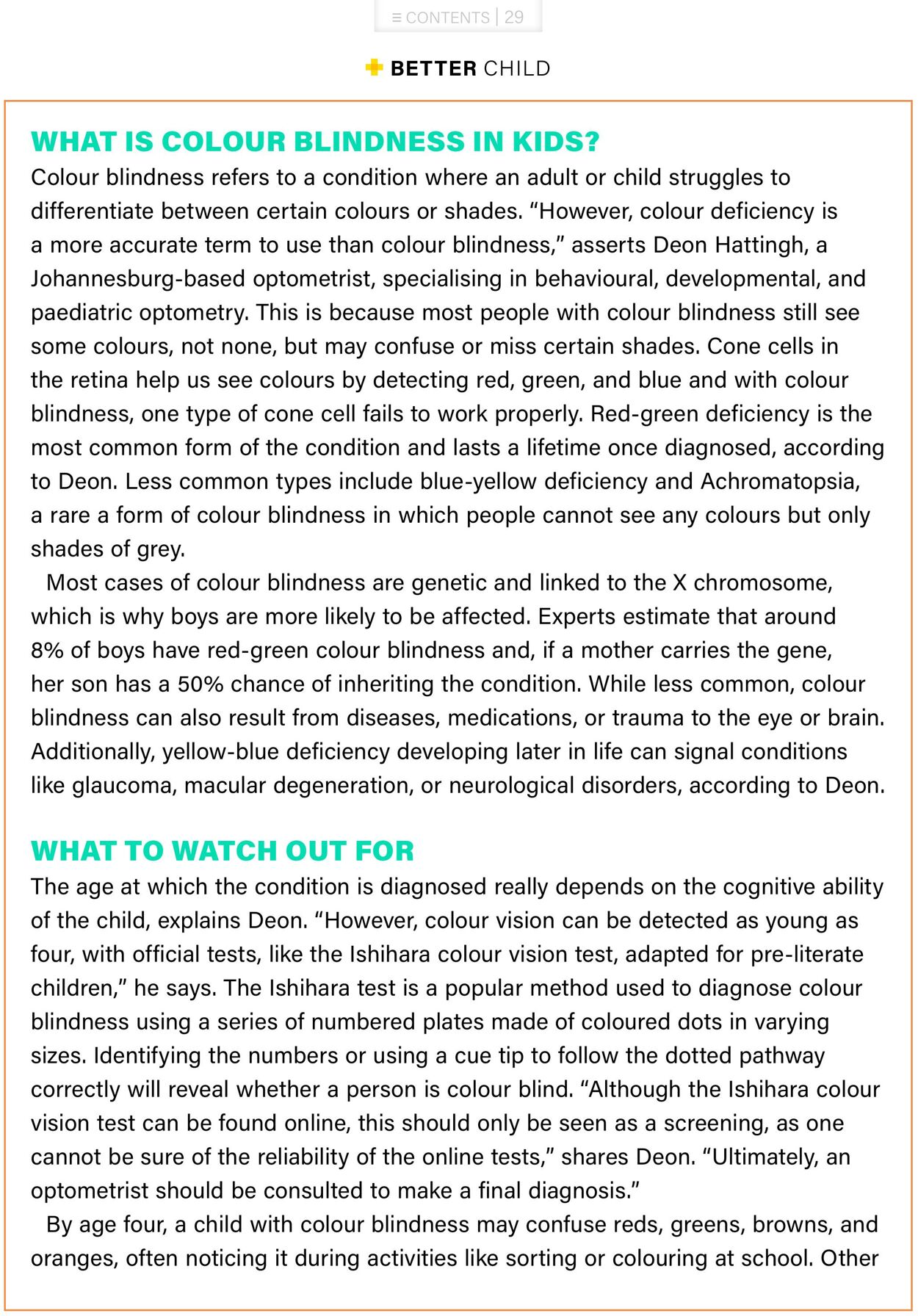













Products in this catalogue
“+ BETTER CHILD WHAT IS COLOUR BLINDNESS IN KIDS? Colour blindness refers to a condition where an adult or child struggles to differentiate between certain colours or shades. “However, colour deficiency is a more accurate term to use than colour blindness,” asserts Deon Hattingh, a Johannesburg-based optometrist, specialising in behavioural, developmental, and paediatric optometry. This is because most people with colour blindness still see some colours, not none, but may confuse or miss certain shades. Cone cells in the retina help us see colours by detecting red, green, and blue and with colour blindness, one type of cone cell fails to work properly. Red-green deficiency is the most common form of the condition and lasts a lifetime once diagnosed, according to Deon. Less common types include blue-yellow deficiency and Achromatopsia, a rare a form of colour blindness in which people cannot see any colours but only shades of grey. Most cases of colour blindness are genetic and linked to the X chromosome, which is why boys are more likely to be affected. Experts estimate that around 8% of boys have red-green colour blindness and, if a mother carries the gene, her son has a 50% chance of inheriting the condition. While less common, colour blindness can also result from diseases, medications, or trauma to the eye or brain. Additionally, yellow-blue deficiency developing later in life can signal conditions like glaucoma, macular degeneration, or neurological disorders, according to Deon. WHAT TO WATCH OUT FOR The age at which the condition is diagnosed really depends on the cognitive ability of the child, explains Deon. “However, colour vision can be detected as young as four, with official tests, like the Ishihara colour vision test, adapted for pre-literate children,” he says. The Ishihara test is a popular method used to diagnose colour blindness using a series of numbered plates made of coloured dots in varying sizes. Identifying the numbers or using a cue tip to follow the dotted pathway correctly will reveal whether a person is colour blind. “Although the Ishihara colour vision test can be found online, this should only be seen as a screening, as one cannot be sure of the reliability of the online tests,” shares Deon. “Ultimately, an optometrist should be consulted to make a final diagnosis.” By age four, a child with colour blindness may confuse reds, greens, browns, and oranges, often noticing it during activities like sorting or colouring at school. Other
| Name | Details |
|---|